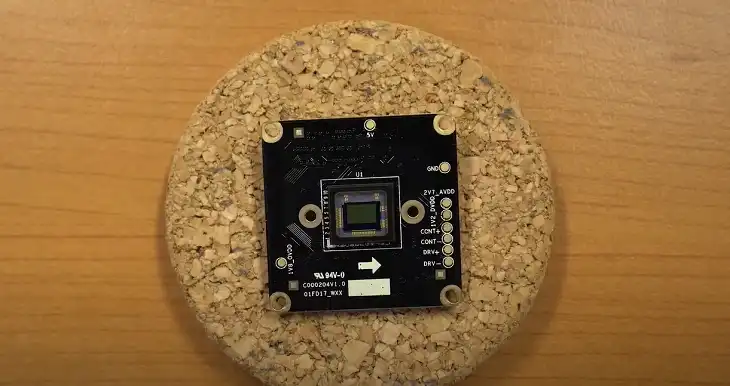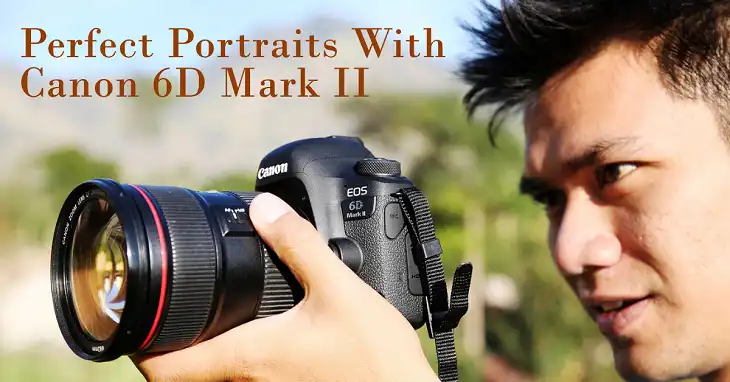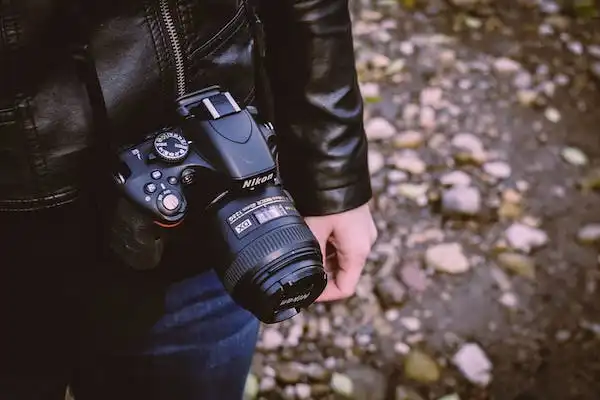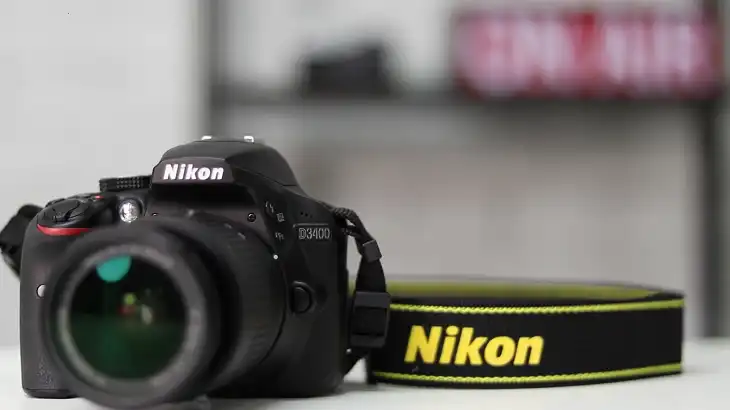Resolution On Smaller Vs Larger Sensors Explained

Understanding camera sensor size is crucial for photographers looking to optimize their image quality and make informed decisions about equipment.
While larger sensors are often touted as superior, the relationship between sensor size and resolution is more complex than it may seem at first glance.
Camera sensor size affects various aspects of image quality, including resolution, depth of field, and low light performance.
However, the impact of sensor size on resolution is not straightforward, as factors like pixel density, lens quality, and diffraction limits all play important roles.
In this article, we’ll explore the intricate relationship between camera sensor size and resolution, examining how different sensor formats compare and what practical implications this has for photographers.
Whether you’re considering upgrading your camera or simply want to better understand the technology behind your images, this guide will help demystify the often confusing world of camera sensors and resolution.
Camera Sensor Size Basics

Before we dive into the complex relationship between sensor size and resolution, it’s important to understand the basics of camera sensors. The sensor is the heart of any digital camera, responsible for capturing light and converting it into an image.
Definition Of Sensor Size
Camera sensor size refers to the physical dimensions of the light-sensitive area of the sensor. It’s typically measured in millimeters and is one of the key specifications that differentiate camera models and formats.
Common Sensor Sizes
There are several common sensor sizes used in digital cameras today:
- Full-frame: Approximately 35mm x 24mm, equivalent to traditional 35mm film.
- APS-C: Varies slightly between manufacturers, but typically around 23.6mm x 15.7mm.
- Micro Four Thirds: 17.3mm x 13mm.
- 1-inch: 13.2mm x 8.8mm, commonly used in advanced compact cameras.
- Smartphone sensors: Vary widely, but often around 1/2.55″ (6.17mm x 4.55mm) or smaller.
Sensor Size Comparison Chart
To visualize the differences between these formats, imagine a full-frame sensor as a standard sheet of paper. In comparison:
- APS-C would be roughly 2/3 the size of full-frame
- Micro Four Thirds would be about 1/2 the size
- 1-inch sensors would be around 1/4 the size
- Smartphone sensors would be a tiny fraction, often less than 1/10 the size
This difference in physical size has significant implications for image quality and camera performance, which we’ll explore in more detail.
Resolution and Sensor Size

Now that we understand the basics of sensor sizes, let’s examine how they relate to resolution and image quality.
Pixel Density And Resolving Power
Resolution in digital photography is often measured in megapixels, which represents the total number of light-sensitive photosite elements on the sensor.
However, when comparing different sensor sizes, it’s more useful to consider pixel density – the number of pixels per unit area.
A smaller sensor with the same number of pixels as a larger sensor will have a higher pixel density. For example, a 24-megapixel APS-C sensor will have a higher pixel density than a 24-megapixel full-frame sensor.
Relationship Between Sensor Size And Resolution
At first glance, it might seem that a smaller sensor with higher pixel density would offer better resolution. However, the relationship is more complex:
- Larger sensors can accommodate larger individual pixels, which can capture more light and potentially produce cleaner images, especially in low-light conditions.
- Smaller sensors with high pixel density require lenses with higher resolving power to take full advantage of their potential resolution.
- Diffraction effects become more noticeable at smaller apertures on sensors with very high pixel densities, potentially limiting the usable resolution in certain shooting conditions.
Comparing Resolution Across Different Sensor Sizes
When comparing resolution across different sensor sizes, it’s important to consider the entire imaging system, not just the sensor itself.
A full-frame camera with a lower-quality lens might produce less detailed images than an APS-C camera with a high-quality lens, despite the larger sensor. Additionally, the way we view and use images plays a role.
If you’re primarily sharing photos on social media or viewing them on small screens, the differences in resolution between sensor sizes may be less noticeable than if you’re making large prints.
Factors Affecting Image Quality
While sensor size is important, it’s just one of several factors that contribute to overall image quality. Let’s explore some other crucial elements:
1. Lens Resolving Power
The quality and resolving power of the lens play a significant role in determining the final image resolution. A high-resolution sensor paired with a low-quality lens won’t produce sharp, detailed images.
Conversely, a lower-resolution sensor with an excellent lens can often produce impressive results. When using smaller sensors, the demands on lens quality increase.
This is because any imperfections in the lens are magnified more when projected onto a smaller sensor area. As a result, lenses designed for smaller sensor formats often need to meet higher standards to achieve comparable image quality.
2. Diffraction Limits
Diffraction is a physical property of light that causes it to spread out when passing through small apertures. As sensor pixel sizes decrease, the effects of diffraction become more noticeable at larger apertures.
For example, on a high-resolution APS-C sensor, diffraction might start to limit detail at f/8 or f/11, while on a full-frame sensor with similar pixel count, you might not see noticeable diffraction effects until f/11 or f/16.
This means that smaller sensors may have a more limited range of usable apertures for maximum sharpness.
3. Signal-To-Noise Ratio
The signal-to-noise ratio (SNR) is a measure of how much of the sensor’s output is true image information (signal) versus random fluctuations (noise). Larger sensors generally have an advantage in this area:
- Larger photosites can capture more light, producing a stronger signal.
- More surface area means more total light gathered, improving overall SNR.
This advantage becomes particularly noticeable in low-light situations or when shooting at high ISO settings.
Practical Implications
Understanding the relationship between sensor size and resolution has several practical implications for photographers:
1. Choosing Lenses For Different Sensor Sizes
When selecting lenses, consider the sensor size of your camera:
- For smaller sensors, invest in high-quality lenses to make the most of the sensor’s resolution potential.
- Be aware that the effective focal length changes with sensor size due to the crop factor. A 50mm lens on an APS-C sensor will have a field of view similar to a 75mm lens on full-frame.
2. Impact On Depth Of Field
Sensor size affects depth of field:
- Larger sensors generally produce a shallower depth of field at the same aperture and framing.
- To achieve similar depth of field on a smaller sensor, you’ll need to use a wider aperture or get closer to your subject.
This can be an advantage or disadvantage depending on your photographic style and subject matter.
3. Low Light Performance
Larger sensors typically perform better in low light conditions:
- They can gather more total light, resulting in cleaner images at high ISO settings.
- The ability to use longer exposure times without introducing motion blur (due to the wider field of view for a given focal length) can also help in low light situations.
However, advances in sensor technology have narrowed this gap in recent years, with some smaller sensors achieving impressive low-light performance.
Conclusion
The relationship between camera sensor size and resolution is complex and multifaceted. While larger sensors offer certain advantages in terms of light-gathering ability and potential image quality, smaller sensors can achieve impressive results, especially when paired with high-quality lenses.
When choosing a camera system, consider your specific needs and shooting style. For many photographers, factors like camera size, lens selection, and overall system cost may be more important than marginal differences in sensor size.
Ultimately, the best camera is the one that allows you to capture the images you envision. Understanding the role of sensor size and resolution can help you make informed decisions, but remember that great photographs are created by skilled photographers, not just by the size of their camera’s sensor.
Frequently Asked Questions
1. What is My Camera Sensor Size?
Your camera sensor size refers to the physical dimensions of the sensor inside your camera that captures light and converts it into an image.
Common sensor sizes include full-frame, APS-C, and micro four-thirds, among others. To determine your camera’s sensor size, you can check the specifications in your camera manual or look it up online using your camera model.
2. How Does Camera Sensor Size Affect Photo Quality?
Camera sensor size significantly impacts photo quality by influencing factors like depth of field, dynamic range, and low-light performance.
Larger sensors typically capture more light, resulting in better image quality with more detail, less noise, and improved performance in challenging lighting conditions.
They also allow for a shallower depth of field, which helps create that sought-after background blur in portraits.
3. Is a Bigger Camera Sensor Better?
Generally, a bigger camera sensor is better in terms of image quality, especially in low-light situations. Larger sensors can capture more light, leading to clearer, more detailed images with less noise.
However, they also tend to result in bulkier and more expensive cameras, so the “best” sensor size depends on your specific needs and shooting style.
4. How is Sensor Size Measured?
Sensor size is typically measured in millimeters, indicating the width and height of the sensor. For example, a full-frame sensor measures approximately 36mm x 24mm. Some sensor sizes are also described using a type designation like “APS-C” or “micro four-thirds,” which refer to specific standardized sensor dimensions.
5. How Big is a Full-Frame Sensor?
A full-frame sensor measures approximately 36mm x 24mm, which is the same size as a 35mm film frame. This sensor size is considered the standard for professional-grade cameras because it offers excellent image quality, especially in terms of low-light performance, depth of field control, and overall detail.
6. How Can I Compare Different Camera Sensor Sizes?
To compare different camera sensor sizes, you can look at their dimensions (in millimeters) or compare them visually using a sensor size comparison chart.
These charts show the relative sizes of different sensors, helping you understand how much larger or smaller one sensor is compared to another, which can impact factors like field of view and image quality.
7. What is the Largest Camera Sensor?
The largest camera sensors are found in medium format cameras, with sizes exceeding 50mm x 40mm.
These sensors provide exceptional image quality, with incredible detail, dynamic range, and depth of field control, making them ideal for high-end photography applications like fashion, studio work, and landscape photography.
8. What’s the Best Camera Sensor for Low-Light Photography?
The best camera sensor for low-light photography is typically a full-frame sensor. Full-frame sensors have larger pixels that can capture more light, which translates to better performance in dim conditions, less noise, and greater dynamic range.
Medium format sensors are even better but are usually more expensive and less portable.
9. What’s the Best Camera Sensor for a Large Print?
For large prints, a medium format sensor is often the best choice because it captures an extraordinary amount of detail, which holds up well when images are enlarged. However, full-frame sensors also perform exceptionally well for large prints, offering a balance of high resolution and overall image quality.






